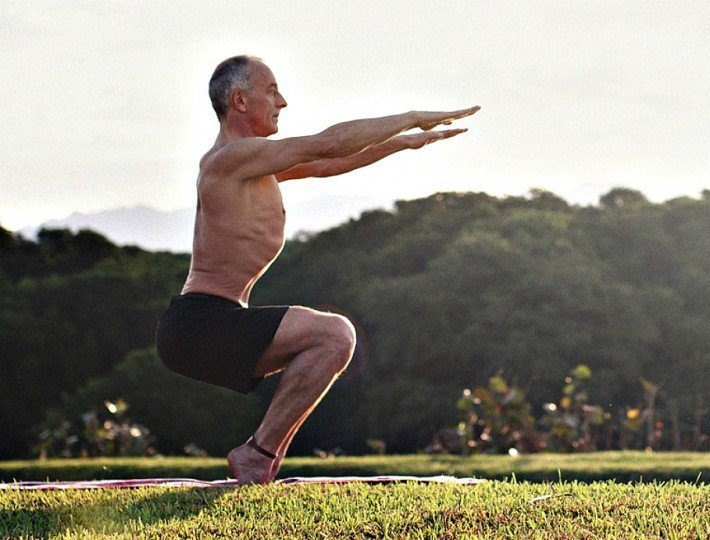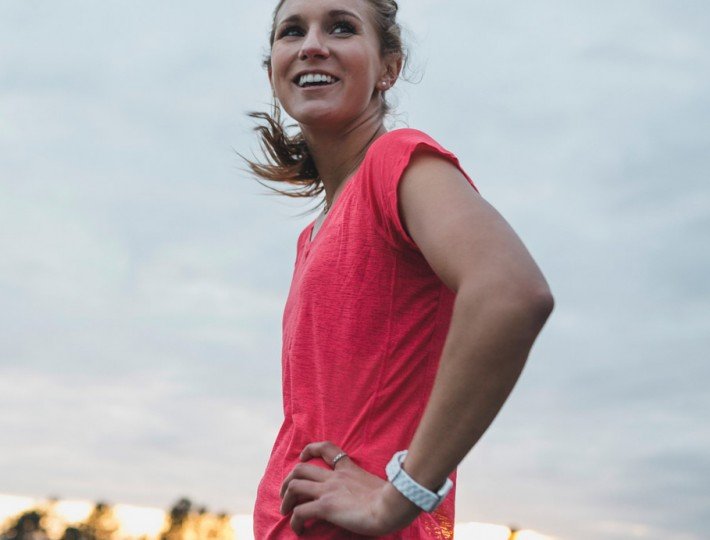Today’s wearable fitness trackers are so much more capable than that first generation of pimped-out pedometers that hit the streets five years ago. While counting your steps and distance traveled is still a huge part of their functionality, these devices have also become the watchdogs of calories burned, sleep patterns, heart rate (sans a cumbersome chest strap), muscle output, and much more. Some even screen emails, texts, and calls right from your wrist. The daily progress report of your activities can be addicting.
“I have clients who will look at their tracker and get up in the middle of the day to go up and down the stairs twice,” says Kira Stokes, a celebrity trainer and instructor at BFX Studio, a boutique fitness studio in New York City.
“Fitness trackers are great motivators that can hold you accountable to your activity levels, or lack thereof, throughout the day.”
Problem is, once you start monitoring your steps, every single one of them counts.
“‘What’s the point if I’m not getting credit for my miles?’ some people might think when they forget to wear their device,” observes Elizabeth Lyons, Ph.D., an assistant professor in the Department of Nutrition and Metabolism at the University of Texas Medical Branch in Galveston. Like many scientists who are scrambling to investigate if fitness trackers indeed promote healthy habits, Lyons is currently working on several studies, including one since 2013 that she plans to publish next year.
“We’re using trackers as facilitators though we don’t want people to rely on them too much,” says Lyons of her test subjects, who range from 55 to 79 years old. For trackers to be effective, goals need to be attainable. “I wouldn’t recommend devices that don’t let you adjust your daily goals. People could hurt themselves trying to get two hours of activities when they are not prepared to do that,” Lyons warns. “It’s helpful for people to use how they feel to change their goals regularly,” she adds. Her subjects generally start out with a goal of 7,000 steps rather than 10,000. For those with mobility issues, she might have them aim for 3,000 and work their way up.
Trackers are meant to support, not dictate. And at best, they can be used as a window into what’s going on inside. “Seeing your heart rate is this low or this high when exercising can really open your eyes as to what’s happening in your body,” says exercise physiologist Robyn Stuhr, the director of the Sports Medicine Program in the Department of Orthopedic Surgery at the University of California San Diego Medical Center. “But there are a lot of other variables—fatigue, sleep, diet, hydration, stress—that can affect both how you feel and how your body responds throughout the day,” she adds. Because most trackers are not currently designed to take these external factors into account (i.e., change your daily goals based on your sleep or stress), it’s up to you to make the call how you feel on a daily basis.
Not to mention, these devices aren’t infallible. “Technology isn’t always 100 percent accurate. It’s really just a guideline to create motivation and make it fun,” emphasizes Stokes, who makes it a point to ask clients wearing heart rate monitors during her classes how they feel. “Let it help you notice change in your in body and recognize how you feel for a month, and then maybe take it off for a month to see if you can gauge these things on your own,” she advises.
Related: Change Your Mind, Change Your Body?
In other words, rather than plug in and tune your body out, use your tracker to get to know yourself. That’s how Brian Bilodeu lost 45 pounds. Since working on the development of the Microsoft Band, the general manager of the Microsoft Health platform learned a lot about himself. “One of the things I realized for myself is that I only burn 2,200 calories a day if I’m not working out. That meant I needed to exercise and burn 500 calories a day to put myself in the 2,700 daily caloric range,” says Bilodeu, who began running and strength training.
“On top of that, I was diligent about getting 7 to 7.5 hours of sleep a night and that restorative effect was huge,” he says. Bilodeu also revealed that Microsoft is working on algorithms to connect the dots, such as sleep and heart rate to help predict how you may feel during exercise. “As our service becomes more sophisticated and the consumer becomes more accustomed to tracking their behaviors, we will definitely be lining up richer experiences, where we integrate other pieces of data, like the weather, time of day, number of meetings you have, etc. All of these have an affect on your persona and being. It’s just a matter of time,” he says.
One way to get your tracker and body in sync starting now is to write down your perceived exertion on a scale of 1 (easy breezy) to 10 (all out effort) after any activity, and see how those numbers match up with the stats on your device. “If how you feel corresponds to the heart rate zones from the tracker, then you’re right on. But if there’s a dissonance between how you feel and what the heart rate is, then you may need to take an exercise test to get a more accurate picture of your personal responses to working out,” suggests Stuhr. “Or give yourself permission to go slightly above or slightly below your heart rate zones depending on how you feel.” If you’re truly concerned by the numbers, you may want to talk to your doctor before your next workout. “It’s important to remember that beating yourself up every day to follow a very strict program is not the ultimate goal,” Stuhr says. “This is all about feeling better and being healthier.”











Comments (0)